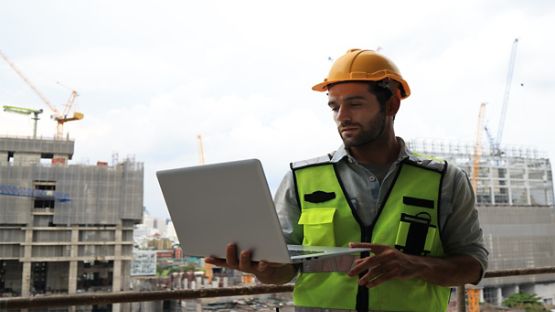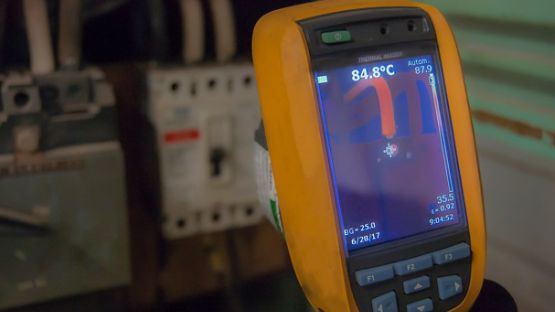Construction risks at non-construction locations
Construction businesses face many risks - and these risks aren’t limited to construction sites. If you rent or own an off-site facility to store equipment and building materials or to use as a temporary office, it’s important to make sure these facilities are protected against potential risks. In the event of a loss, your business could suffer downtime and lost revenue. Whether inside or outside, all sites storing your property should be checked regularly.
Indoor storage risks and precautions
Indoor or outdoor storage sites should be chosen during the initial construction stage and should be a manageable
driving distance from the construction site. When storing materials and equipment indoors at a location other than your construction site, you will need coverage to protect against a variety of losses. Occurrences such as theft, vandalism and losses from fire, smoke and water could be possible. Depending on what you’re storing, extreme temperatures, exposure to sunlight, and moisture or leaks can damage your stored items. For example, a roof leak can warp semi-finished wood and ruin bags of cement making it unusable.
If you need additional indoor storage, choosing an alarmed facility to deter unscrupulous visitors is best. You should select a building that offers a security system, fire detectors and a sprinkler system. Ensure that expensive tools are locked in storage containers with the keys kept in a secure location. Storage areas should have compatible materials stored together. Overfilled warehouses can obstruct access to exits and access to firefighters. Storage of products should be in accordance with manufacturers’ requirements.
Off-site outdoor storage risks and precautions
Unlike indoor storage, outdoor storage is a much easier target for theft as it is more visible and less protected. In addition to being attractive to thieves or vandals, outdoor storage leaves your property vulnerable to the elements, including wind, water, hail, snow, ice, and extreme heat or cold.
Whenever possible, choose outdoor storage facilities that are fenced (preferably with controlled entrances), with security cameras and ample lighting. If your employees routinely leave equipment in company vehicles in a storage yard, make sure each vehicle is always locked and has GPS tracking. In addition, locks should be used on gas and oil tank caps. Engraving or stamping all equipment, including attachments, with a unique ID number will allow for easy identification. Also, a sign advertising that all items contain identifiers is an excellent deterrent. Keeping track of which employees use specific items and having a record of who has keys is good business practice.
Risks and precautions facing temporary construction offices
Sometimes it is necessary to set up a temporary office away from your main facility. During this temporary situation, it is vital to protect your company’s and clients’ sensitive business information. In addition to the theft or corruption of computer data from desktop computers, laptops and smartphones, consider the risk of stolen information from any paper items, such as client purchase orders or construction drawings. You may also have equipment, furniture, tools and other property stored on the temporary site that require coverage.
Instruct your staff on the best procedures to reduce the chances of losses. These practices include locking all doors of offices and storerooms when not in use and, if possible, giving each employee a different alarm code. Change laptop and smartphone passwords regularly and, when available, enable GPS tracking on electronic devices. Install motion sensor lights and security cameras outside your temporary office, and check that all alarms and detectors are functioning.
Insurance and your business
While it is crucial to do all that you can to prevent losses, so too is working with your insurance broker to ensure that you have sufficient insurance coverage. In addition to insuring your property stored off-site, you also need insurance coverage for any accidents that occur involving equipment you own. You could also need environmental cleanup and liability insurance if you are storing certain products. Insurance plays an essential role in the success of your company if you are a business owner who uses off-site premises
Statistics on theft protection
#1. Recent statistics show that construction theft in the U.S. results in losses of up to $1 billion across the country.1
#2. Employee theft costs Canadian businesses about $1.4 billion annually.2
#3. Ford Super Duty pickup trucks, a popular choice for business vehicles, take spots two through seven in AutoTrader’s list of most stolen vehicles in Canada for 2017.3
#4. Cargo theft (the theft of items being transported) costs the Canadian economy $5 billion annually.4
For more information, contact your insurance broker. If you don’t have one, use our Find a Broker tool.
Sources:
1. http://help.calamp.com/resources/corporate-information/2016theftstudy.pdf
2. http://www.cbc.ca/news/canada/nova-scotia/employee-theft-business-loss-money-1.3983773
4. http://www.ibc.ca/on/business/business-crime













